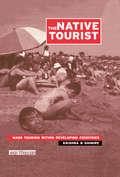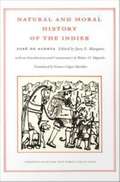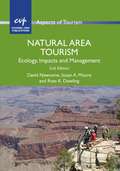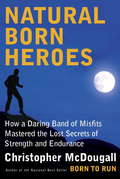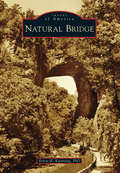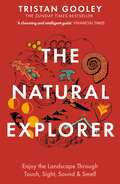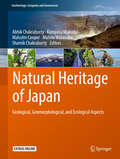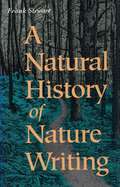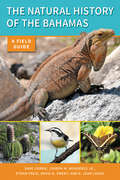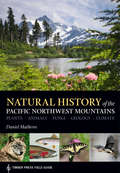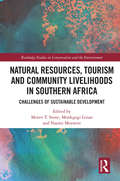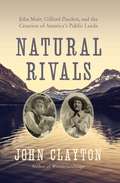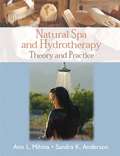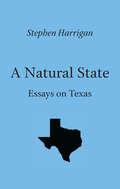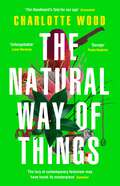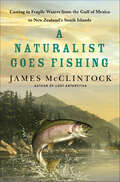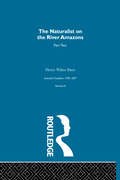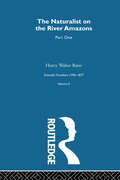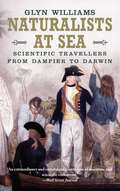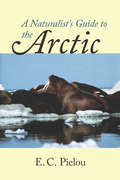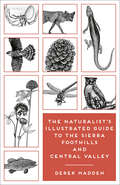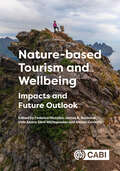- Table View
- List View
The Native Tourist: Mass Tourism Within Developing Countries
by Krishna B GhimireDomestic tourism in developing countries is rapidly outstripping international tourism and could soon involve ten times the numbers. This is an examination of the numbers involved, their profile, behaviour, impacts and the relevant policy responses. The volume looks at the impacts of local mass tourism in various socio-economic and environmental contexts and on diverse social groups. It provides analysis and overviews of seven of the main countries involved in Asia, Africa and Latin America.
Natural and Moral History of the Indies
by José De AcostaThe Natural and Moral History of the Indies, the classic work of New World history originally published by José de Acosta in 1590, is now available in the first new English translation to appear in several hundred years. A Spanish Jesuit, Acosta produced this account by drawing on his own observations as a missionary in Peru and Mexico, as well as from the writings of other missionaries, naturalists, and soldiers who explored the region during the sixteenth century. One of the first comprehensive investigations of the New World, Acosta's study is strikingly broad in scope. He describes the region's natural resources, flora and fauna, and terrain. He also writes in detail about the Amerindians and their religious and political practices. A significant contribution to Renaissance Europe's thinking about the New World, Acosta's Natural and Moral History of the Indies reveals an effort to incorporate new information into a Christian, Renaissance worldview. He attempted to confirm for his European readers that a "new" continent did indeed exist and that human beings could and did live in equatorial climates. A keen observer and prescient thinker, Acosta hypothesized that Latin America's indigenous peoples migrated to the region from Asia, an idea put forth more than a century before Europeans learned of the Bering Strait. Acosta's work established a hierarchical classification of Amerindian peoples and thus contributed to what today is understood as the colonial difference in Renaissance European thinking.
Natural Area Tourism
by David Newsome Susan A. MooreNatural Area Tourism provides a comprehensive description of tourism in natural areas allowing readers to understand the scope of, complexities arising from, and possibilities of undertaking successful tourism developments in natural areas. Furthermore, the second edition contains an overview of recent developments, such as mountain biking, adventure activities in protected areas and geotourism. There is new content and examples from the Asian region on managing the tourism industry and management effectiveness. The book also considers important new developments in monitoring, such as remote sensing and the use of GIS, as well as the use of electronic educational resources in delivering interpretation. Attention is given to the implications of climate change, inadequate protected area security and the ever-increasing influence of the landscape matrix. Moreover, the second edition includes a comprehensive review of the new literature that has emerged since the publication of the first edition more than a decade ago. Accordingly this book will remain an invaluable resource and account of natural area tourism for many years to come.
Natural Born Heroes: Mastering the Lost Secrets of Strength and Endurance
by Christopher McdougallThe best-selling author of Born to Run now travels to the Mediterranean, where he discovers that the secrets of ancient Greek heroes are still alive and well on the island of Crete, and ready to be unleashed in the muscles and minds of casual athletes and aspiring heroes everywhere. After running an ultramarathon through the Copper Canyons of Mexico, Christopher McDougall finds his next great adventure on the razor-sharp mountains of Crete, where a band of Resistance fighters in World War II plotted the daring abduction of a German general from the heart of the Nazi occupation. How did a penniless artist, a young shepherd, and a playboy poet believe they could carry out such a remarkable feat of strength and endurance, smuggling the general past thousands of Nazi pursuers, with little more than their own wits and courage to guide them? McDougall makes his way to the island to find the answer and retrace their steps, experiencing firsthand the extreme physical challenges the Resistance fighters and their local allies faced. On Crete, the birthplace of the classical Greek heroism that spawned the likes of Herakles and Odysseus, McDougall discovers the tools of the hero--natural movement, extraordinary endurance, and efficient nutrition. All of these skills, McDougall learns, are still practiced in far-flung pockets throughout the world today. More than a mystery of remarkable people and cunning schemes, Natural Born Heroes is a fascinating investigation into the lost art of the hero, taking us from the streets of London at midnight to the beaches of Brazil at dawn, from the mountains of Colorado to McDougall's own backyard in Pennsylvania, all places where modern-day athletes are honing ancient skills so they're ready for anything. Just as Born to Run inspired readers to get off the treadmill, out of their shoes, and into the natural world, Natural Born Heroes will inspire them to leave the gym and take their fitness routine to nature--to climb, swim, skip, throw, and jump their way to their own heroic feats.From the Hardcover edition.
Natural Bridge (Images of America)
by Ernst H. KastningNatural Bridge, located in the historic Shenandoah Valley, is one of the most recognized and visited geologic landmarks in the country. The massive 90-foot-wide arch spans Cedar Creek, which runs 200 feet below. Legend says that George Washington, as a young land surveyor, carved his initials on its wall. In 1774, King George III granted ownership to Thomas Jefferson. Natural Bridge was often regarded as the "Eighth Natural Wonder of the World" during the 19th and 20th centuries. The site became a popular venue for events, ranging from conventions to the annual Easter Sunrise Service. Hotels, inns, and cottages were built to accommodate travelers, and on-site attractions--including a show cave, a wax museum, and a Monacan Indian village--broadened visitor appeal. Natural Bridge remained privately owned until 2014, when the title was transferred, allowing it to become a state park; the bridge will now truly belong to the people, a concept that would have made Jefferson proud.
The Natural Explorer: Understanding Your Landscape
by Tristan GooleyTristan Gooley, author of THE NATURAL NAVIGATOR demonstrates how it is possible to connect profoundly with the lands we travel through. In THE NATURAL EXPLORER he combines the work of the some of the most insightful travellers of the past two thousand years with his own experience.From the author of How To Read Water, The Sunday Times Book Of The Year. The most rewarding travel experiences do not depend on our destination or the length of our journey, but on our levels of awareness. A short walk can compare with an epic journey, when we take the time to focus on the things that dramatically enrich each journey.Exploration is no longer about hardship or long distances, it is about celebrating the sense of connection and discovery that is possible in all our travels.
Natural Grace: The Charm, Wonder, and Lessons of Pacific Northwest Animals and Plants
by William DietrichThis informative and engaging selection of natural history essays is adapted from articles published in the Seattle Times magazine, Pacific Northwest. A native Washingtonian, Dietrich has watched the Northwest double in population during his lifetime. Our rapidly changing view of nature is an underlying theme throughout his wide-ranging essays, as is the timely and essential question of how best to share and conserve the natural world that drew us to the region in the first place.
Natural Heritage of Japan
by Abhik Chakraborty Kuniyasu Mokudai Malcolm Cooper Mahito Watanabe Shamik ChakrabortyThis volume brings together the geological, geomorphological and ecological aspects of Japan's natural heritage, arguing for dynamic conservation of such heritage and explaining their key characteristics in an accessible format for general readers. Sites from World Heritage Properties (Natural), UNESCO Global Geoparks, and National Parks of Japan representing key facets of this heritage are analyzed in depth, and the text is supplemented with color photographs and useful information for potential travelers. The volume is divided into thematic sections that help understand the diversity of Japan's natural heritage, with supplementary information on conservation, tourism trends, local culture and lifestyles. In addition, chapters analyzing nature's mechanisms that engender diverse heritage landscapes and conservation/sustainable management schemes make this volume a valuable resource for both general readers and those with more specialized interests.
A Natural History of Nature Writing
by Frank StewartA Natural History of Nature Writing is a penetrating overview of the origins and development of a uniquely American literature. Essayist and poet Frank Stewart describes in rich and compelling prose the lives and works of the most prominent American nature writers of the19th and 20th centuries, including: *Henry D. Thoreau, the father of American nature writing. *John Burroughs, a schoolteacher and failed businessman who found his calling as a writer and elevated the nature essay to a loved and respected literary form. *John Muir, founder of Sierra Club, who celebrated the wilderness of the Far West as few before him had. *Aldo Leopold, a Forest Service employee and scholar who extended our moral responsibility to include all animals and plants. *Rachel Carson, a scientist who raised the consciousness of the nation by revealing the catastrophic effects of human intervention on the Earth's living systems. *Edward Abbey, an outspoken activist who charted the boundaries of ecological responsibility and pushed these boundaries to political extremes. Stewart highlights the controversies ignited by the powerful and eloquent prose of these and other writers with their expansive - and often strongly political - points of view. Combining a deeply-felt sense of wonder at the beauty surrounding us with a rare ability to capture and explain the meaning of that beauty, nature writers have had a profound effect on American culture and politics. A Natural History of Nature Writing is an insightful examination of an important body of American literature.
The Natural History of The Bahamas: A Field Guide
by Dave Currie Joseph M. Wunderle Jr. Ethan Freid David N. Ewert D. Jean LodgeTake this book with you on your next trip to the Bahamas or the Turks and Caicos Islands or keep it close to hand in your travel library. The Natural History of the Bahamas offers the most comprehensive coverage of the terrestrial and coastal flora and fauna on the islands of the Bahamas archipelago, as well as of the region's natural history and ecology. Readers will gain an appreciation for the importance of conserving the diverse lifeforms on these special Caribbean islands. A detailed introduction to the history, geology, and climate of the islands. Beautifully illustrated, with more than seven hundred color photographs showcasing the diverse plants, fungi, and animals found on the Bahamian Archipelago.
Natural History of the Pacific Northwest Mountains: Timber Press Field Guide (A Timber Press Field Guide)
by Daniel MathewsNatural History of the Pacific Northwest Mountains is an engagingly written, portable history and identification guide for the flora, fauna, and geology of the region. This guide also includes information about the landscape and weather. Packed with 800 color photographs, this is the perfect overview of the Pacific Northwest if you are looking for a simple way to discover the great outdoors.
A Natural History of Trail Ridge Road: Rocky Mountain National Park's Highway to the Sky (Natural History)
by Amy LawConstructed from 1929 to 1932 and opened to tourists and drivers the following year, Trail Ridge Road earned immediate inclusion among the scenic wonders of the world. The new path through the park followed the ancient trail across Tombstone Ridge and offered visitors breathtaking views and a privileged glimpse at unique ecosystems. Today, Trail Ridge Road endures as a truly otherworldly place. It is the country's highest continuous paved road, peaking at over twelve thousand feet and running forty-eight miles. Join author Amy Law on a tour across the Continental Divide and through the history of Colorado's most famous byway.
Natural Resources, Tourism and Community Livelihoods in Southern Africa: Challenges of Sustainable Development (Routledge Studies in Conservation and the Environment)
by Naomi Moswete Moren T. Stone Monkgogi LenaoThis book examines the connections between natural resources, tourism and community livelihood practices in Southern Africa, highlighting the successes and constraints experienced over the last 50 years. Questioning how natural resources, tourism and community livelihoods relations can positively contribute towards development efforts, this book adopts an interdisciplinary approach to understand socio-ecological systems that characterize the dynamics for sustainable development. It explores the history of conservation and natural resource management in Southern Africa and traces the development and growth of nature-based tourism. Boasting a wide range of tourism landscapes, including national parks, wetlands, forests and oceans, the book draws on case studies from a variety of Southern African countries, including Botswana, Namibia and South Africa, and considers the political challenges for implementing policies and practices. Furthermore, it analyses broader issues such as the impact of climate change, human–wildlife co-existence and resulting conflicts, poor access to funding and poverty in local communities. The book argues that the links between conservation and livelihoods can be best understood by considering the different approaches to reconciling the demands of conservation and livelihoods that have evolved over the past decades. Containing contributions from natural and social sciences the book provides guidance for practitioners and policymakers to continue to shape policies and practices that are in line with the key tenets of sustainable development. It will also be of great interest to students and scholars researching Southern Africa, sustainable tourism and conservation.
Natural Rivals: John Muir, Gifford Pinchot, And The Creation Of America's Wilderness
by John ClaytonA dynamic examination that traces the lives of two of the most influential figures—and their dueling approaches—on America's natural landscape. John Muir, the most famous naturalist in American history, protected Yosemite, co-founded the Sierra Club, and is sometimes called the Father of the National Parks. A poor immigrant, self-taught, individualistic, and skeptical of institutions, his idealistic belief in the spiritual benefits of holistic natural systems led him to a philosophy of preserving wilderness unimpaired. Gifford Pinchot founded the U.S. Forest Service and advised his friend Theodore Roosevelt on environmental policy. Raised in wealth, educated in privilege, and interested in how institutions and community can overcome failures in individual virtue, Pinchot’s pragmatic belief in professional management led him to a philosophy of sustainably conserving natural resources. When these rivaling perspectives meet, what happens? For decades, the story of their relationship has been told as a split between the conservation and preservation philosophies, sparked by a proposal to dam a remote Yosemite valley called Hetch Hetchy. But a decade before that argument, Muir and Pinchot camped together alongside Montana’s jewel-like Lake McDonald in, which was at the heart of a region not yet consecrated as Glacier National Park. At stake in 1896 was the new idea that some landscapes should be collectively, permanently owned by a democratic government. Although many people today think of public lands as an American birthright, their very existence was then in doubt, and dependent on a merger of the talents of these two men. Natural Rivals examines a time of environmental threat and political dysfunction not unlike our own, and reveals the complex dynamic that gave birth to America's rich public lands legacy.
Natural Spa and Hydrotherapy: Theory And Practice
by Sandra Anderson Ann MihinaThe recent growth of the spa industry has resulted in a need for highly educated practitioners of spa and hydrotherapy treatments. Natural Spa and Hydrotherapy: Theory and Practice is designed to meet the needs of today's spa practioners. This book can be used for spa training as well as for skill enhancement for individual therapists. It will assist students of massage and bodywork as well as practitioners in spa settings and private practice who have the desire to increase their knowledge and understanding of, and competency in, natural spa and hydrotherapy.
A Natural State: Essays on Texas
by Stephen Harrigan&“The personal essay at its best. What Edward Abbey did for the desert Southwest and what E. B. White did for Maine, Harrigan has done for Texas.&” —Houston Chronicle In this remarkable collection of essays, Stephen Harrigan explores, with an unfailing depth of feeling, the human longing to feel at home in the world of nature. In vivid and convincing prose, he evokes the landscape of his home territory, Texas, and his own reactions, sometimes droll, sometimes haunted, to the extraordinary power of place that Texas projects. &“Like our best nature writers, he tells us not only what&’s out there, but connects it to our everyday lives . . . A Natural State is recommended reading not just for Texans but for all who would explore their connections to the natural world.&” —The Washington Post &“While &‘luminous&’ is not a word that you would think of in connection with the Lone Star State, that&’s what these pieces are . . . They are filled with poetry, wit, and delightfully offbeat observations.&” —The San Diego Union-Tribune &“Harrigan defty weaves fact, historical perspective, and personal experience into a tightly interlaced evocative fabric . . . By the end of the book, he brings the vast Texas landscape within grasp of even the most skeptical reader.&” —The Denver Post &“Harrigan&’s observations are not those of an academically trained naturalist but rather the fresh outlook of a city-bred tourist rejoicing in the exhilaration of discovery.&” —Booklist &“Though several of the essays display a strong ecological bent, the author is never shrill. He is an accomplished prose stylist who combines accurate research with an unerring eye for detail. Highly recommended.&” —Science
The Natural Way of Things: From the Booker Prize-shortlisted author of Stone Yard Devotional
by Charlotte WoodFrom the author of the Booker Prize-shortlisted novel Stone Yard Devotional'Savage: think Atwood in the outback'PAULA HAWKINS'An unforgettable reading experience'LIANE MORIARTY'Ferocious . . . recalls the early Elena Ferrante'NPR'A masterpiece'GUARDIAN'Devastating' ECONOMISTShe hears her own thick voice deep inside her ears when she says, 'I need to know where I am.'The man stands there, tall and narrow, hand still on the doorknob, surprised.He says, almost in sympathy, 'Oh, sweetie. You need to know what you are.'"Two women awaken from a drugged sleep to find themselves imprisoned in a broken-down property in the middle of a desert.Strangers to each other, they have no idea where they are or how they came to be there with eight other girls, their heads shaved, guarded by two inept yet vicious jailers.Doing hard labour under a sweltering sun, the prisoners soon learn what links them: in each girl's past is a sexual scandal with a powerful man.They pray for rescue but as the hours turn into days and the days into weeks and months, it becomes clear only the girls can rescue themselves.Praise for Charlotte Wood's Stone Yard DevotionalShortlisted for the Booker Prize 2024 'A beautiful, mature work that does not flinch from life'SUNDAY TIMES'A transfixing novel'FINANCIAL TIMES'A book about what it means to be good: simply and with great humility, it asks the big questions, leaving the reader feeling kinder, more brave, enlarged'ANNE ENRIGHT'I have rarely been so absorbed by a novel . . . A powerful, generous book'GUARDIAN
A Naturalist Goes Fishing: Casting in Fragile Waters from the Gulf of Mexico to New Zealand's South Islands
by James McClintockIn the tradition of fishing classics, A Naturalist Goes Fishing combines elements of the triumph between fisher and fish, humor and wit, and a passionate concern for the natural environment. James McClintock takes us to some of the most breathtaking waters the world has to offer while capturing the drama and serendipity in the beloved sport of fishing. We follow him and his fishing buddies and professional guides, as he fishes off the marshy barrier islands of Louisiana, teeming with life but also ravaged by recent disasters like the Deepwater Horizon spill. We travel to the remote waters of New Zealand's Stewart Island, where the commercial fishing industry is fast disappearing; fish for gigantic Antarctic toothfish through a drilled ice hole at McMurdo Station; and scout for spotted bass on Alabama's Cahaba River, which has the highest diversity of fresh water fish in North America. As we take this global journey, we see how sea level rise, erosion, pollution, water acidification, and overfishing each cause damage.This strikingly beautiful narrative is a must read for anglers and nature lovers alike.
The Naturalist on the River Amazons Vol II: Scientific Travellers VI
by Henry Walter BatesThe Naturalist on the River Amazons is a record of adventures, habits of animals, sketches of Brazilian and Indian life and aspect of nature under the Equator, during the author's eleven years of travel, in two volumes this is the second.
The Naturalist on the River Amazons Volume I: Scientific Travellers 1790-1877 Volume V
by Henry Walter BatesThe Naturalist on the River Amazons is a record of adventures, habits of animals, sketches of Brazilian and Indian life and aspect of nature under the Equator, during the author's eleven years of travel, in two volumes, this is the first.
Naturalists at Sea
by Glyn WilliamsOn the great Pacific discovery expeditions of the "long eighteenth century," naturalists for the first time were commonly found aboard ships sailing forth from European ports. Lured by intoxicating opportunities to discover exotic and perhaps lucrative flora and fauna unknown at home, these men set out eagerly to collect and catalogue, study and document an uncharted natural world. This enthralling book is the first to describe the adventures and misadventures, discoveries and dangers of this devoted and sometimes eccentric band of explorer-scholars. Their individual experiences are uniquely their own, but together their stories offer a new perspective on the extraordinary era of Pacific exploration and the achievements of an audacious generation of naturalists. Historian Glyn Williams illuminates the naturalists lot aboard ship, where danger alternated with boredom and quarrels with the ships commander were the norm. Nor did the naturalists difficulties end upon returning home, where recognition for years of work often proved elusive. Peopled with wonderful characters and major figures of Enlightenment science--among them Louis Antoine de Bouganville, Joseph Banks, John Reinhold Forster, Captain Cook, and Charles Darwin--this book is a gripping account of a small group of scientific travelers whose voyages of discovery were to change perceptions of the natural world.
A Naturalist's Guide to the Arctic
by E.C. PielouThis book is a practical, portable guide to all of the Arctic's natural history—sky, atmosphere, terrain, ice, the sea, plants, birds, mammals, fish, and insects—for those who will experience the Arctic firsthand and for armchair travelers who would just as soon read about its splendors and surprises. It is packed with answers to naturalists' questions and with questions—some of them answered—that naturalists may not even have thought of.
The Naturalist's Illustrated Guide to the Sierra Foothills and Central Valley
by Derek MaddenThis guide to the wildlife and vegetation of California’s Central Valley and Foothills Regions features more than seven hundred detailed line drawings.California’s San Joaquin and Sacramento Valleys and the nearby Sierra Nevada Foothills are host to abundant, varied, and often surprising plants and wildlife. This fully illustrated guide pairs over seven hundred meticulous line drawings with descriptions of the birds, mammals, amphibians, reptiles, fishes, invertebrates, plants, and fungi that make this diverse and beautiful region their home. Like a ranger-led nature walk, each species receives a lively overview; readers will learn about freshwater jellyfish, mushrooms that decompose railroad ties, handstanding spotted skunks, salt-shedding pickleweed—not to mention insects. Every write-up not only contains fun facts but also conveys a sense of the complex connections and interactions that sustain life in a unique place. Previously published as Magpies and Mayflies (Heyday, 2005), The Naturalist’s Illustrated Guide to the Sierra Foothills and Central Valley features updated scientific and common names, and a full redesign.
Nature-based Tourism and Wellbeing: Impacts and Future Outlook
by Federico Niccolini, James R. Barborak, Iride Azara, Eleni Michopoulou and Alessio CavicchiAll around the world, as growing numbers of tourists and recreational visitors flock to protected and other natural areas stimulated by a renewed search for physical, mental, and even spiritual health and wellbeing, different practices and behaviours emerge. This book brings together experiences and perspectives from many countries around the world. On the demand side, the experiences are united by the desire of tourists to find a real and regenerating connection in nature. On the supply side, designing and managing tourist systems that preserve natural capital in good condition requires great professionalism to dynamically maintain a fragile and delicate balance between tourists, local communities, and nature. By understanding the attitudes and emerging norms of behaviour within the context of nature-based tourism, we can begin to sketch a roadmap to enable more holistic, enjoyable, healthy and responsible visitor experiences; facilitate ecosystem conservation; contribute to the mental and physical wellbeing of tourists and outdoor recreationists; and build sustainable economies and resilient destinations and livelihoods. This book is of great relevance for academic researchers, advanced tourism and conservation students, and practitioners working in nature-based tourism and conservation, especially those with a focus on natural destinations, as well as those interested in consumer behaviour, business and management, recreation, and sustainable tourism development.
Nature-Based Tourism in Peripheral Areas
by Stephen Boyd C. Michael HallThis book provides one of the first detailed examinations of the problems of nature-based tourism development in peripheral areas. A diverse range of environments is used to illustrate the challenges and difficulties of managing nature-based tourism resources. A central theme throughout the book is the degree of opportunity that nature-based tourism provides as the basis for peripheral region development.
